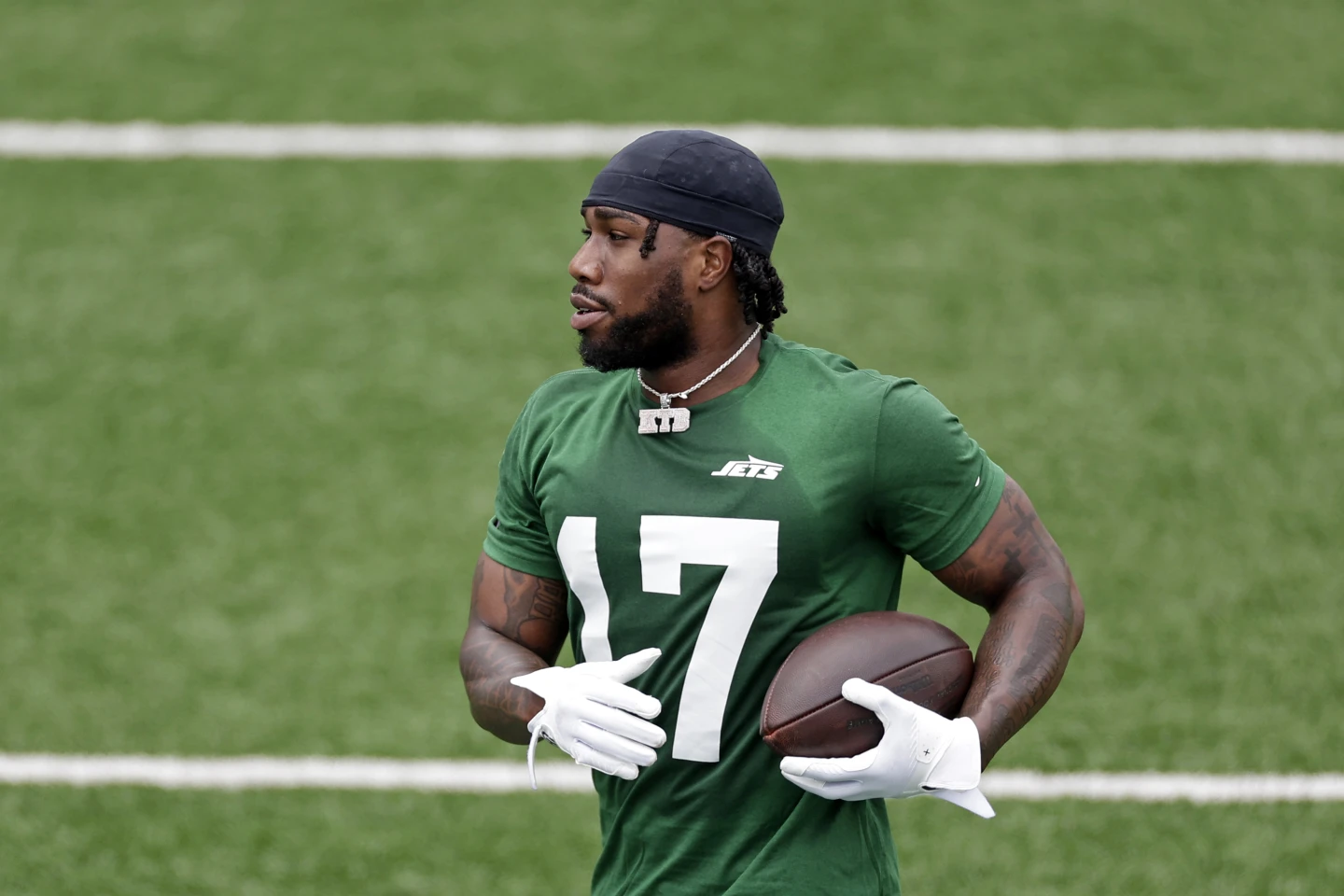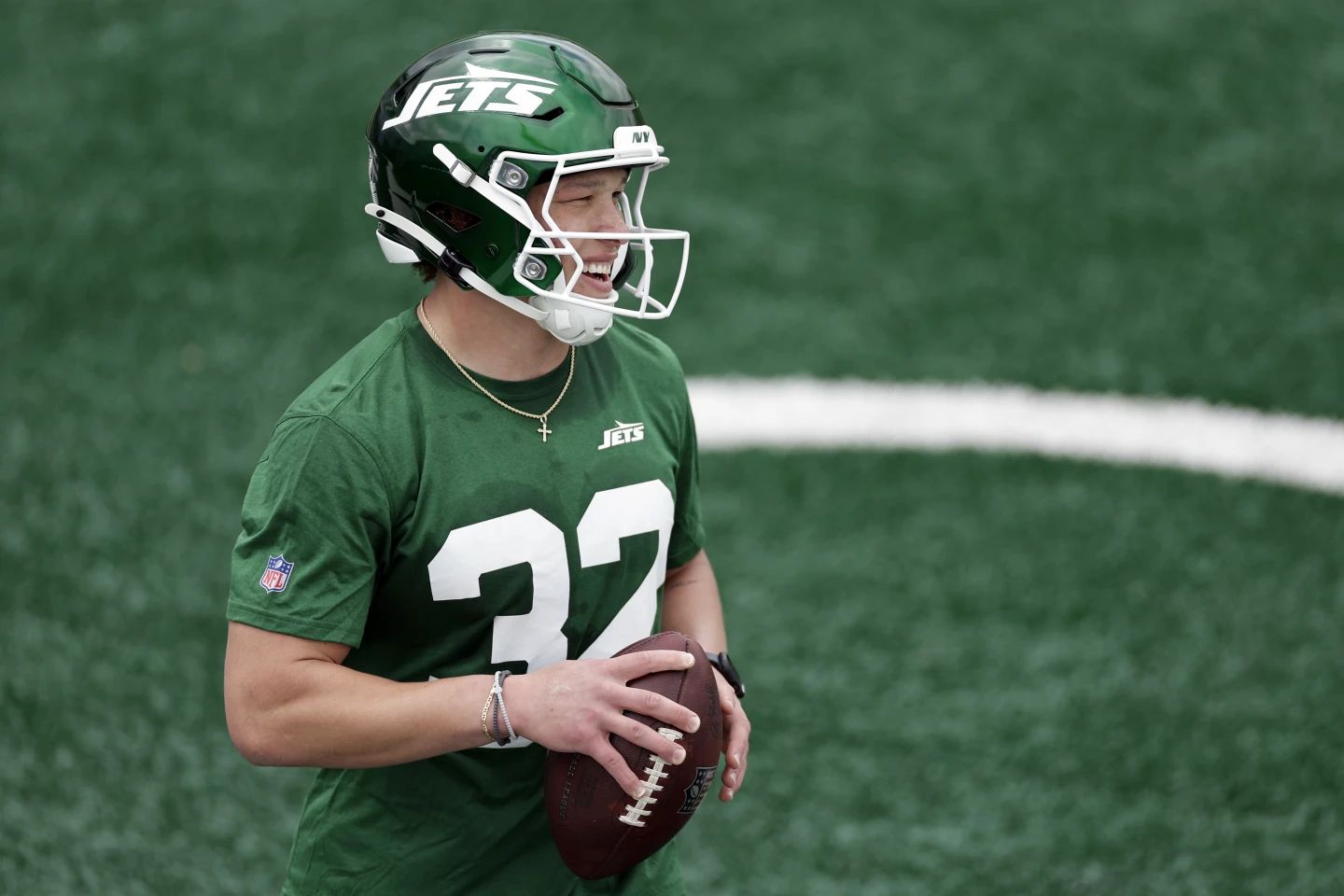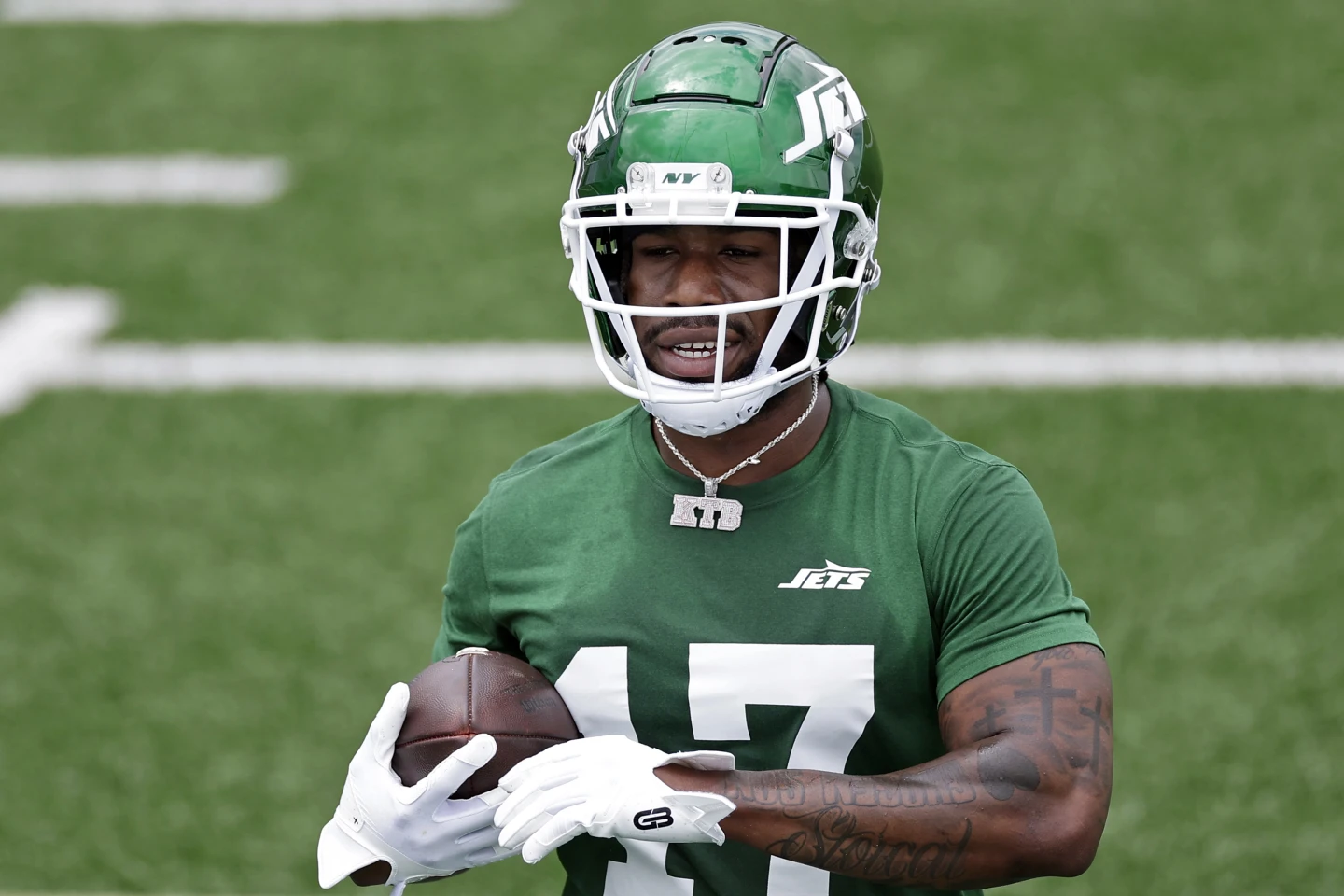Malachi Corley gets excited whenever a defender tries to tackle him. When that happens, the rookie wide receiver from the New York Jets is prepared to hit back even harder. Then, he just keeps on running.
“I always aim to do something productive with the ball,” said Corley, the Jets’ third-round pick from Western Kentucky, during the team’s rookie minicamp. “And bulldozing through opponents is my way of asserting dominance.”
This aggressive approach is why the Jets also picked up two powerful running backs in the draft: Braelon Allen from Wisconsin in the fourth round and Isaiah Davis from South Dakota State in the fifth.
Coach Robert Saleh believes that having players with this mindset is infectious. “Having that mentality, along with adding the two big backs, is infectious,” Saleh explained. “Bringing that physicality to the team, whether it’s the offensive line or any other aspect, the goal is for it to become a contagious quality that spreads throughout the entire organization.”
Corley led the nation with 1,674 yards after making catches and breaking 55 tackles during his last two seasons with the Hilltoppers.

This ability to embrace contact caught the attention of the Jets during the draft evaluation process, leading Saleh and his team to contemplate how Corley’s presence could benefit the offense led by Aaron Rodgers.
“In times when players tend to protect themselves, he never steps out of bounds,” Saleh commented. “Those extra 1 or 2 yards, every yard counts. Often, you’ll see runners go out of bounds after an 8-yard gain on first-and-10.
You’re thinking it’s second-and-2, but then it becomes third-and-1, and suddenly you’re punting. Instead, if you plant your foot and go vertical on first-and-10, now it’s first-and-10 again, and you have a fresh set of downs. That makes a big difference in football.”
Corley is viewed as a complement to Garrett Wilson, Mike Williams, and Allen Lazard in the Jets’ passing attack. The 5-foot-11, 215-pound wide receiver has been likened to San Francisco’s Deebo Samuel because of his similar size — Samuel is 6 feet tall and 215 pounds — and his physical style as a versatile playmaker.
“It’s a great honor,” Corley said of being compared to Samuel. “I believe I’ve barely tapped into my potential as a player. Yards after the catch are just something I naturally do. But I’m striving to up my game beyond the label of just being a gadget player or a weapon.”

Corley might receive intensive training this offseason on what it takes to excel in Nathaniel Hackett’s offense from Rodgers. The two share business agents and the four-time NFL MVP offered Corley a stay in his guest house — an offer the rookie plans to accept.
“That’s going to be my main guy while I’m here,” Corley said happily. At just 20 years old, Allen was the youngest player drafted last weekend. But he doesn’t seem or play like a typical youngster.
Standing at 6 feet 1 inch and weighing 235 pounds, the running back made quite a name for himself at Wisconsin, rushing for 3,494 yards and scoring 35 touchdowns in three seasons. Known for his ability to break tackles, he averaged 5.9 yards per carry throughout his college career, using a combination of speed and strength.

“It’s always been my style of play,” Allen explained. “Being a bit bigger than others was an advantage for me as a kid.” Drawing from his wrestling background, Allen learned about leveraging his strength, hand fighting, and mental toughness, skills he applied on the football field.
The Jets envision him as a potential complement to Breece Hall, whose agility allows him to move outside and sprint downfield, while Allen is more of a power runner between the tackles.
Similarly, Davis, who stands at 6 feet 1 inch and weighs 220 pounds, played a crucial role in South Dakota State’s back-to-back FCS national championships. He racked up 4,458 rushing yards and scored 50 touchdowns, averaging an impressive 6.7 yards per carry in his four seasons with the Jackrabbits.
“I believe it’s about maintaining a certain standard and playing with physicality,” Davis remarked. “Physical play has always been my approach. We emphasized it at SDSU, so I’ll continue that here, asserting dominance.”
He recognizes that the NFL demands physicality, whether it’s as a running back or on special teams, and he’s prepared to meet that challenge.
